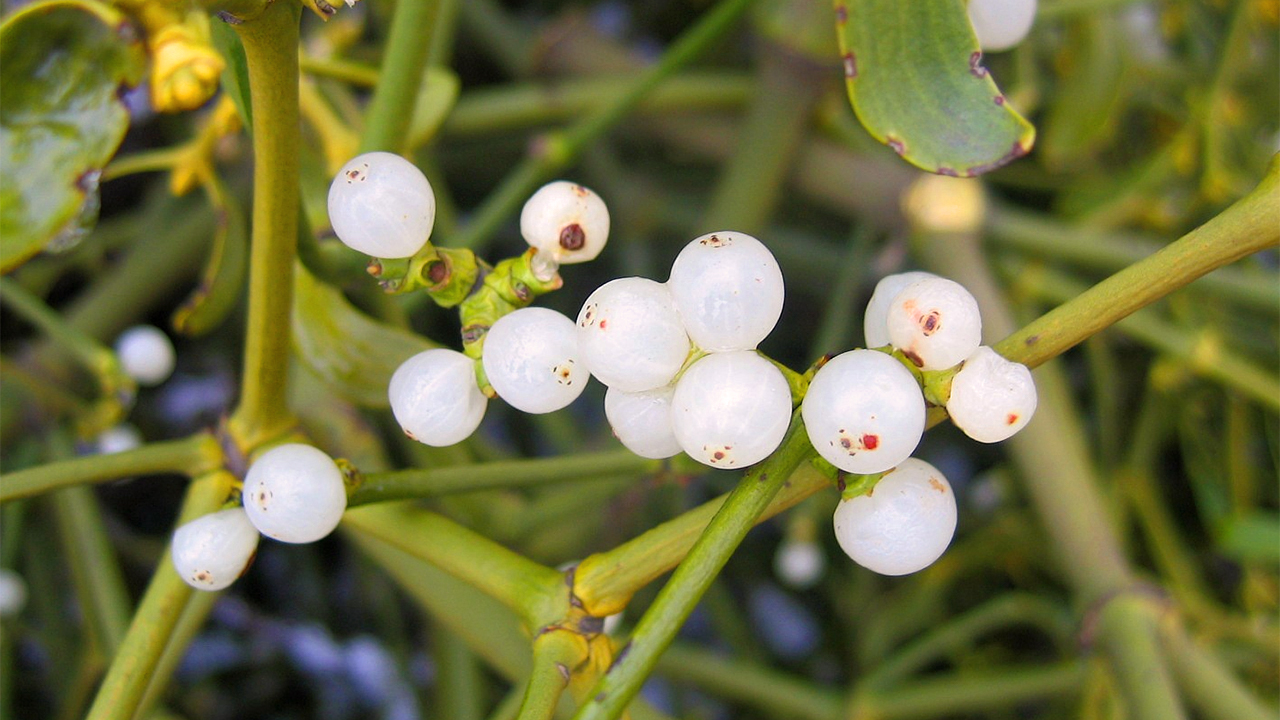Mistletoe, Viscum album, is a parasitic plant known for its cultural significance, especially during the Christmas season.
It typically grows as a hemiparasite on a variety of trees. Mistletoe forms connections to its host tree’s water and nutrient systems, allowing it to extract these resources for its growth.
This plant is commonly found in the canopies of hardwood trees, such as oak, apple, and hawthorn, though it can also thrive on other species.
The growth of mistletoe begins when a bird eats the plant’s berries and later excretes the seeds. These seeds, often sticky, adhere to the branches of trees.
Once attached, the mistletoe seed germinates and sends out roots that penetrate into the tree’s bark and tap into its water and nutrient supply.
Over time, the mistletoe develops into a green, leafy plant that is visible hanging from the tree branches.
It prefers well-lit areas, so it is more commonly found on the higher branches of trees where sunlight is abundant.
While mistletoe can be harmful to its host tree by extracting vital nutrients, it is also an important part of the ecosystem.
It provides food for birds and other wildlife, especially in the winter months.
Additionally, mistletoe is a keystone species in some environments, meaning it has a disproportionately large effect on its ecosystem relative to its abundance.
What is the History of Mistletoe?

About The Author
John Bagnasco has been in the gardening industry for over 50 years, starting with a horticulture degree from Michigan State University and following a stint at Frank’s Nursery and Crafts in Detroit.
After publishing his first book “Plants for the Home Vol. I” in 1976, he moved to California to become regional manager and buyer for the Nurseryland division of Sunbelt Nursery Group.
He then became the head buyer for Armstrong Garden Centers based in Glendora, California. John had a part-time affiliation with Creative Promotions for ten years before joining them full-time in October 2000 as a senior editor and radio personality for Garden Compass.
John has also taught horticulture classes at Palomar College and San Diego State University.
He is the host of the DVD “The Essential Guide to Roses,” which also features Bryan Main and Bruce and Sharon Asakawa.
His most recent book is “Planting Designs for Cacti and Succulents”.
Currently, John is a co-host on “Garden America,” an interactive live gardening show that additionally provides podcasts of the broadcasts accessible on all major platforms.
You can contact John here.

